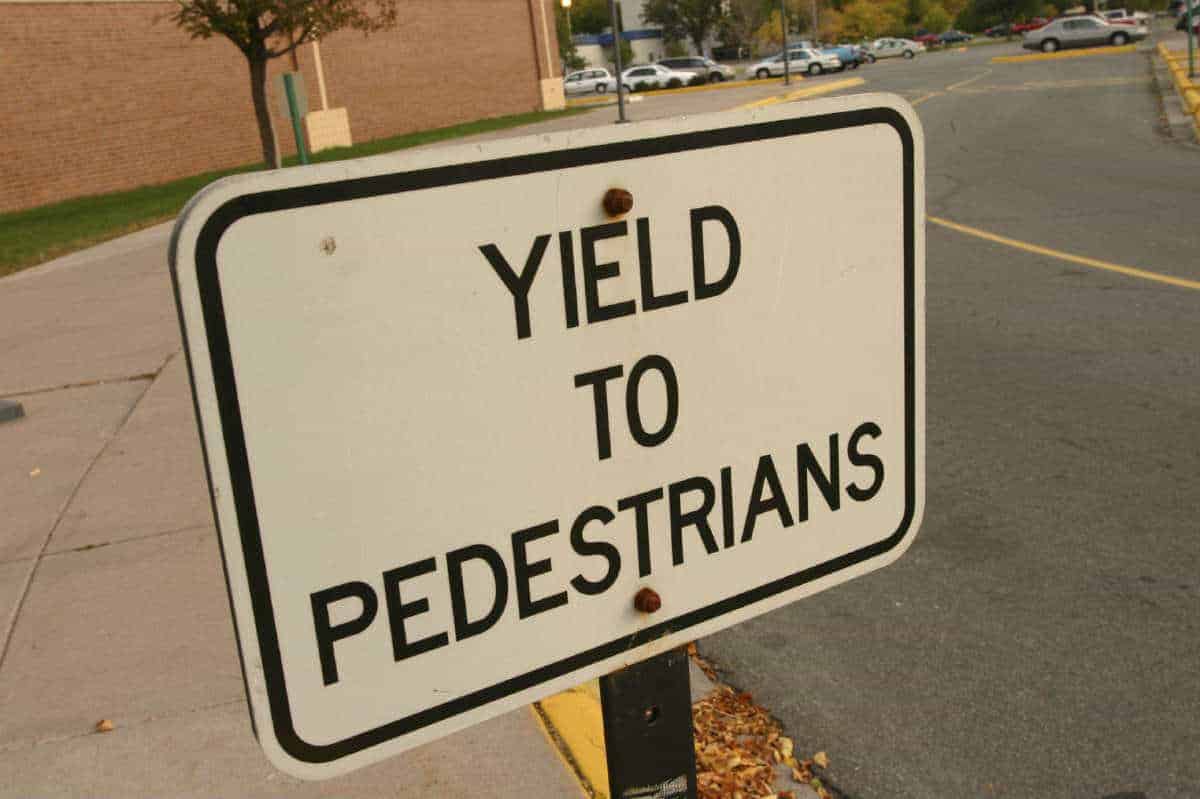Pedestrian Accident Lawyers in Chicago, IL
Willens & Baez is a top-rated law firm with an award-winning team of Chicago Personal Injury Lawyers and Pedestrian Accident Attorneys who can help you when you have been injured in a pedestrian accident. Since we charge no legal fees, unless and until we succeed in obtaining a monetary recovery for you, you can count on us fighting hard to get you the compensation you need and deserve.
We know that an injury case has the potential to take over a person’s life, making it difficult to move forward. People turn to us for the dedicated, caring help they require, regardless of the type of accident they were in or the type of injury sustained. We want to help them take control of their situation so they can focus on what matters most — getting back on track. This is also why many of our firm’s cases are referred to us from other lawyers and law firms who trust us to handle their friends, family members and clients’ personal injury cases.
Why Let Willens & Baez handle your Chicago Pedestrian Accident?
There are far too many injuries and deaths from pedestrian accidents in Chicago, its surrounding suburbs, and all of Illinois.
Being a lifelong Chicagoan, I’m of course glad to see that Chicago was at the bottom of the list (45 out of 51). However, in the past ten years in Chicago, there have been more than 1100 deaths from pedestrian accidents and many thousands of injuries from accidents involving pedestrians.
Based upon technological advances in vehicle design and the way vehicles are manufactured, cars are safer and therefore, occupants of vehicles involved in accidents are less likely to be killed as they once were, i.e., people killed in vehicle crashes have seen a sharp decline. The same is not true for pedestrian traffic deaths. Unfortunately, technological advances will not make pedestrians less vulnerable in pedestrian accidents. In fact, pedestrian traffic deaths have been on the rise for the last several years.
Willens & Baez serves Chicago and surrounding areas. We are available 24/7. If you can’t come to us, we’ll arrange to come to you. Your consultation with us is free.
Call (312) 957-4166 For a Free Consultation
Need an Experienced Pedestrian Accident Attorney?
Because we have helped many clients seriously injured in Illinois pedestrian accidents, we know how to get the best results.
The Chicago pedestrian accident lawyers of Willens & Baez, understand that recovery from a pedestrian accident can be difficult and expensive. In any accident involving a pedestrian and a car, bus, train, truck, or other motor vehicles, there is a likelihood of serious injuries. Even at low speeds, a pedestrian can suffer catastrophic injuries or death when struck by several thousand pounds of moving steel.
If you or a loved one has been in a pedestrian accident, please call us for a free and confidential case review with a Chicago pedestrian accident injury lawyer. We may be able to get you the compensation you need and deserve.
Causes of Pedestrian Accidents
Most pedestrians are aware of the dangers of walking on streets and crossing intersections. Sometimes though, being careful on the part of a pedestrian is not enough to prevent an accident. Even the most careful pedestrian cannot prevent a distracted driver or a driver under the influence of drugs or alcohol from striking them. Even if they are obeying all traffic signals, pedestrians may be seriously injured at intersections and crosswalks.
These are some of the most common causes of pedestrian accidents:
- Dark streets. According to the Pedestrian and Bicycle Information Center, three-quarters of pedestrian fatalities in the US occur in dark conditions. Pedestrians are advised to wear bright clothing when walking at night or on poorly lit roads.
- Alcohol impairment. The National Highway Traffic Safety Administration reports that alcohol was involved in 47 percent of fatal pedestrian accidents in the US in 2017.
- Failure to yield right of way. More data from the NHTSA shows that failure to yield was a factor in nearly 30 percent of fatal pedestrian crashes in 2017.
- Statistics have revealed that pedestrian deaths in the US are at a 30-year high, and experts say this is due to the increase in distractions for both drivers and walkers. Smartphone use has spiked, and other activities such as putting on makeup and eating also take attention away from the road.
- Improper left-hand turns. This driving maneuver causes a quarter of all pedestrian crashes, says the NPR. It is dangerous because the vehicle has to cross the opposite lane, and the pedestrian may not see where the vehicle is coming from. Additionally, many drivers make illegal left turns, making it more unforeseeable for walkers.
Experience You Can Trust
Because we have helped many clients seriously injured in Illinois pedestrian accidents, we know how to get the best results. If needed, our skilled and experienced Chicago pedestrian injury lawyers work with top-notch experts to maximize the value of our clients’ pedestrian accident cases.
One of our successful cases revolved around a 12-year-old girl who was struck by a van while she was crossing the street. She sustained a traumatic brain injury that caused her to be permanently disabled. We worked tirelessly to achieve justice for her and her family, even when the defense strongly denied liability. Ultimately, we won a $15.8 million verdict for the family, which was recognized among the Top 100 Verdicts in the US that year.
We have also obtained high-value settlements in other types of pedestrian crashes – ones involving cars, trucks, buses, and bikes. Contact us today to see how our winning experience can work for you.
Types of Pedestrian Accident Injuries
Pedestrians are more vulnerable to injury than drivers of motor vehicles. Without a seatbelt, airbag, and steel cage of protection, a person on foot is at high risk for serious injuries. Types of pedestrian injuries include:
- Amputations
- Blindness
- Brain Injuries
- Broken Bones
- Burns
- Catastrophic Injuries
- Orthopedic Injuries
- Spinal Cord Injuries
- Torn Ligaments
- Death
Pedestrian fatalities most often occur at night. With lower visibility, drivers have slower reactions which result in injuries to the pedestrian. The influence of drugs or alcohol can be a factor for both the driver and the pedestrian. A driver under the influence will again have slower reaction times and have skewed depth perception.
Car vs. Pedestrian Accidents
Without any form of personal protection whatsoever, pedestrians are helpless in the face of negligent drivers. Pedestrians struck by motor vehicles can sustain severe injuries such fractured bones that need surgery to repair; disfigurement and life-threatening injuries to the head, neck or back. Death is an ever-present danger.
Non-fatal and fatal injuries will mean pain, suffering, and monetary losses for pedestrian victims. Among the hardships, an accident can impose are huge medical expenses; loss of income, and permanent or partial disabilities such as the loss of the ability to walk or the use of one’s arms and hands. That’s why it’s so important to contact an experienced pedestrian accident attorney in Chicago to find out what you may be entitled to.
Illinois authorities said the two most common causes of pedestrian deaths are speeding motor vehicles and the failure of vehicles to stop when people cross their paths.
This, despite an Illinois law, passed in 2010 requiring drivers to stop at crosswalks for pedestrians. Drivers, however, either ignore this law or are unaware of it, said a study by the American Trucker’s Association.
Compensation
The amount and type of compensation a pedestrian receives will depend on the at-fault driver’s assets; the extent of the pedestrian’s injuries; the degree to which the pedestrian contributed to the accident and both parties’ insurance coverage.
Automobile insurance is mandatory in Illinois, where the liability against an at-fault driver is normally based on negligence. In most cases, the most likely source of compensation for an injured pedestrian is automobile insurance.
In addition, practically every state (including Illinois) requires that insurance companies offer uninsured motorist or underinsured motorist (UM/UIM) insurance. Even if the negligence of the at-fault driver is upheld, however, the ability of an injured pedestrian to obtain financial compensation will depend on the extent of the driver’s insurance coverage.
Illinois is not a “no-fault insurance” state. In a no-fault state, the plaintiff’s insurance will pay the plaintiff’s claim if the injury or damage caused by the accident is below a certain limit, and there are no serious injuries. No lawsuit against the defendant is allowed in a no-fault state.
In Illinois, however, liability and compensation are determined by the state’s modified comparative fault doctrine. This means a person injured in a pedestrian or auto accident is generally entitled to financial damages up to the percentage of fault attributed to the negligent driver.
This also means a plaintiff’s damages will be reduced by the degree of fault assigned to him. Any recovery is barred if the judge or jury decides the plaintiff is 51% responsible for causing his or her injuries.
If the driver caused the accident in Illinois, the driver’s insurance will provide compensation, that is if the driver has insurance. If the driver is uninsured, then the pedestrian’s UIM or no-fault coverage will compensate the pedestrian for his or her losses.
In Illinois, the minimum liability coverage drivers must carry amounts to a mere $20,000 per injury victim and $40,000 per accident. These small sums are patently inadequate, especially when an injured pedestrian victim suffers a serious injury, and more so when there are multiple victims in an accident.
Uninsured or Underinsured
This bad situation gets worse if a pedestrian is hit by an uninsured or underinsured driver. This situation exists in Illinois where one in seven drivers is uninsured. Furthermore, three in 20 drivers have insufficient insurance coverage.
A viable option, therefore, is to look at the liability and insurance coverage of all potential defendants, apart from the negligent driver. Among those that can be held liable are the negligent driver’s employer; the motor vehicle maker (based on defects in the vehicle involved in the pedestrian accident); local governments because of unsafe roads and a claim for UM/UIM benefits.
The negligent driver’s insurance company will always attempt to shift blame to the plaintiff to get their client off the hook. They’ll try to prove the pedestrian jaywalked; crossed outside the crosswalk or was drunk, among other defenses.
The Illinois statute of limitations (or the deadline for a lawsuit to be initiated after the accident) stipulates that a personal injury lawsuit must be filed within two years of the accident. Since time is of the essence, it’s important to contact a Chicago pedestrian accident attorney right away if you’ve been injured this way.
Criminal liabilities
In Illinois, a person killed by a person at fault such as a negligent driver can recover damages in a civil action for personal injury or wrongful death.
The family of the deceased person can file a wrongful death lawsuit against the driver considered at fault to obtain financial redress for lost income. If the driver is convicted of the criminal charges, the chances of success for a related civil claim are also increased.
Illinois state law provides that a person causing an accident resulting in the death of another can be charged with reckless homicide (also called vehicular homicide in other states). This offense is a Class 3 felony and will draw a sentence ranging from 2 to 5 years in the Illinois Department of Corrections and up to $25,000 in fines. Drivers convicted of reckless homicide have their licenses revoked for two years.
A motorist can only be convicted of reckless homicide if there’s proof his driving was a legal cause of the death. For a conviction to occur, there must be a direct link between the defendant’s driving and the death.
An at-fault driver is frequently charged with reckless homicide in a motor vehicle accident resulting in a fatality or fatalities. Illinois law does not consider this offense involuntary manslaughter, however.
This contrasts with Texas state law, which includes a charge of vehicular manslaughter. This charge might be brought when a victim loses his or her life in a traffic accident.
Texas’ vehicular manslaughter law applies when a driver unintentionally causes an accident that kills a pedestrian; another driver; occupants of a vehicle and cyclists.
Vehicular manslaughter is a Class 2 felony offense in Texas and carries a harsher prison term extending from 2 to 20 years.
Electric Cars Pose Risk to Pedestrians
Electric cars are silent and eco-friendly, promising low running costs, minimal noise, and green operations. Electric cars and hybrids are nearly silent and offer maximum comfort. However, this quietness also poses potential risks on the roadway. Pedestrians can easily hear the sound of trucks, motorcycles, and cars passing by, but battery-powered cars are barely audible. Electric cars give no audible indications when it starts moving. This poses a risk for pedestrian accidents.
Pedestrians and Bicyclists at Risk
Children and pedestrians and cyclists wearing headphones are at an even higher risk of getting into an accident with an electric car. This problem is significant in loud urban areas where traveling electric cars are too silent to be audible.
In 2013, the National Highway Traffic Safety Administration (NHTSA) highlighted the need for electric and hybrid vehicles to give a warning when moving at slower speeds; seeing and hearing offers the best defense against the risk of getting hit or run over by a motor vehicle. According to NHTSA, noise-emitting devices on electric cars could prevent almost 3,000 pedestrian and cyclist accidents each year. A study conducted in 2011 concluded that electric vehicles pose twice the risk of an accident when starting, stopping, slowing, backing up, or when entering or leaving parking lots or driveways.
Federal Mandates
If federal or state governments mandate for electric cars and hybrids to emit a warning to alert its presence, the device will have to be installed so that the pedestrians are aware of its location and whether it is moving toward or away from them. Also, it needs to be ensured that the sound does not interfere with other signals such as horns, sirens, and backup signals. It is also important that the sound is standardized so that pedestrians and cyclists can easily identify it.
How Vehicle Speed Affects the Risk of Fatal Pedestrian Accidents
A recent study aimed to analyze the relationship between vehicle speed and the risk of a fatal pedestrian accident shows how dangerous cars are to pedestrians.
In 2013, around 4,735 pedestrians were killed in traffic accidents in the United States. In other words, one traffic accident-related pedestrian death occurs every two hours. Furthermore, nearly 150,000 pedestrians reported to emergency rooms for treatment of non-fatal accident-related injuries. Due to obvious reasons, pedestrians are 1.5 times more likely to get killed in a car crash compared to vehicle occupants. Owing to the high number of passenger injuries and fatalities, federal and state authorities have been making serious efforts to create awareness about pedestrian safety.
Considerable research has been done to understand the factors that increase the likelihood of pedestrian injury and fatality in the event of a crash. In this post, our Chicago personal injury lawyers will discuss how vehicle speed impacts the risk of a fatal accident.
Does Speed Matter?
When a motor vehicle hits a pedestrian, there is little chance that the pedestrian will escape without injuries. Even if the crash occurs at low speed, the pedestrian can suffer serious injuries. A recent study aimed to analyze the relationship between vehicle speed and the risk of a fatal pedestrian accident shows how dangerous cars are to pedestrians. The study broke down data to demonstrate how the age of the victim affects his/her chance of survival in the event of a crash.
The study shows that serious injuries and even fatalities can occur at a low speed. A collision between a passenger car traveling at 18mph and a 70-year-old pedestrian has a 10 percent mortality rate. At a slightly higher speed (23mph), the mortality rate for an average pedestrian is 10 percent. Surprisingly, at 34 mph, 50 percent of the older pedestrian victims will likely die, and at 42 mph, fifty percent of all pedestrians will likely die. A crash at 50 mph will kill 90 percent of older pedestrians, and about three-quarters of pedestrians of all ages.
Speed is a common element in many car accidents. Over the past decade, speed-related accidents have contributed to more than 28 percent of traffic-related deaths. This means, in terms of the total fatality rate, speeding is as dangerous as drunk driving. These statistics are obviously startling, and a cause of concern for state and city legislators. The study has found that the risk of a crash turning fatal begins to increase sharply at 25 mph. For this reason, some cities have reduced the speed limit from 30 mph to 25 mph in areas with high pedestrian traffic.
Pedestrians Should Avoid “Distracted Walking”
Not many of us talk about distracted walking – a pedestrian who is engaged in texting or talking on a cell phone.
We are well aware of the dangers of distracted driving. Distracted driving includes any activity that causes a driver’s attention to focus on something other than driving, such as talking on a cell phone, texting, or changing radio stations. Statistics show that distracted driving may be as dangerous as driving under the influence of alcohol or drugs, though the penalties are less strict. Not many of us talk about distracted walking, which refers to a walker who is engaged in texting, talking on the phone, eating, or any other distraction.
Distracted Walking Statistics
A study conducted by Ohio State University has concluded that the risk of injury associated with distracted walking outpaced that of distracted driving. The researchers studied cell phone use-related ER visits from 2004 to 2010 that included injuries to drivers, bicyclists, and pedestrians in which an electronic device was used. It was found that almost 70 percent of the injuries were sustained by people who were engaged in a cell phone conversation and that injuries from distracted walking increased by over 100 percent during this period.
A study conducted by University of Washington found that nearly 50 percent of pedestrians crossing an intersection did so while distracted. The largest percentage were found engaged in some type of technology such as texting, wearing headphones, or talking on a cell phone.
Pedestrians Not Paying Attention
The problem with distracted walking is that pedestrians who are distracted tend to cross intersections or streets more slowly and sometimes without looking both ways or against the light. When talking on a cell phone, the pedestrian may not be able to hear an approaching motor vehicle. Distracted walkers are at risk of being struck by cars or other motor vehicles and also of walking into objects or falling off elevations such as bridges.
Although it is not illegal to speak on the phone while walking, it is dangerous. If a person is distracted when struck by a vehicle, he or she may not be able to hold the driver liable for the injuries. Educating pedestrians about the dangers of distracted walking may help reduce severe injuries and accidents. Avoid using a cell phone or wearing headphones when crossing an intersection. Look both ways before crossing an intersection, even if the traffic light is in your favor.
Pedestrian Accident: Who Is at Fault?
Whether a car hits a pedestrian or pedestrian bumps into a car, both parties have the right to claim compensation for any injuries they suffered. However, each party must present sufficient evidence in support of their claim. The court determines who was at fault for a pedestrian accident based on the evidence presented by each party. A number of factors are taken into consideration when determining fault. If both parties are partially at fault for the accident, the court determines each party’s share of negligence and decides who should be given the compensation and who would be liable to pay compensation.
How a Pedestrian Can Cause an Accident
In general, a vehicle driver has the responsibility to yield to a pedestrian on the road. This means that the pedestrian has the right of way. This also means that a vehicle driver must be able to notice a pedestrian from a distance and take the necessary steps to make sure accidents do not occur. However, this does not mean that pedestrians have no responsibility. There are rules about how and when a pedestrian should cross a road. In some car accident cases, a pedestrian may be completely or partially negligent for the accident.
Who Broke the Law?
The first thing that is taken into consideration is who broke the law. Was the driver:
- intoxicated?
- running a red light or stop sign?
- speeding?
- fail to notice the pedestrian?
- fail to yield to the pedestrian?
Or perhaps the pedestrian was at fault. Did the pedestrian:
- follow traffic rules when crossing the road?
- cross the street away from crosswalks?
- drinking?
The Scene of the Accident
Whether the accident occurred at a place where pedestrians are not allowed to enter is another important factor to be considered. For instance, pedestrians are not allowed to enter some bridges, roads under construction, or highways. Just because pedestrians have the right of way does not mean they can behave irresponsibly on the roads. They are expected to take precautions on the road.
Comparative Negligence in Pedestrian Accident Cases
In some car accident cases involving a pedestrian, both the motorist and the pedestrian could be partially at fault for the accident. In such cases, comparative negligence laws of the state are implemented. Typically, each negligent person’s share of fault is determined. One party gets compensation if his share of negligence is less than 50 percent. Also, if a person was partially at fault for the accident, his compensation is reduced by the percentage of negligence.
What can be done to prevent pedestrian deaths and serious injuries?
There are things that municipalities can do (and are doing) to prevent pedestrian accidents involving deaths and serious injuries. There are also things that pedestrians can do (and are NOT doing) to prevent pedestrian accidents.
The municipalities can:
- Reduce the speed limit in residential areas;
- Create midblock crossings on low-volume, low-speed roadways;
- Create medians (refuge crossings) to separate two main directions of traffic;
- Place cameras around parks, schools, and other places children tend to be; and
- Enforce of the law.
Pedestrians can (and listen to this because it’s a biggie):
- Pay attention! Whatever is happening on your mobile device can wait!! Use your eyes! Use your ears! Don’t walk/jog/run distracted!!! Your life depends on it!!!!
- Obey traffic laws. Even if you are in a hurry, do not cross a street unless you have the walk sign to cross. A car can come speeding out of nowhere and you could suffer the consequences.
- Only cross at safe areas (specifically, cross at a crosswalk). Again, while you may be in a hurry, jaywalking can make it so you may be contributorily negligent.
- Avoid cars that are risky. If you see a car swerving or driving recklessly, avoid walking near it. When cars are turning, wait until their turn is complete before stepping into the roadway.
- If you have a walk sign and therefore the right of way, still check to ensure that no driver is recklessly driving and could cause you injuries.
- Check your insurance. Review your coverage and make sure you have the most uninsured motorist coverage possible. Generally, the people with the worst insurance cause the most damage. Be proactive and protect yourself in case you are injured in the future.
Why are there fewer pedestrian deaths in Chicago than in other big cities?
Compared to other big metropolitan areas, Chicago has a lot of sidewalks for pedestrian use. Chicago also has a lot of transit options that reduce the number of cars on the road. Chicago has a lot of walkers, people walking to transit and work. The more walkers, the safer walkers are – safety in numbers. Lastly, Chicago has a very good grid which helps move vehicular traffic more efficiently than cities without a good grid.an Accident Lawyers
If you or a loved one has injured in a pedestrian accident, the Chicago pedestrian accident lawyers at Willens & Baez can help protect your rights and assist you in recovering monetary compensation that you need and deserve. Contact our skilled pedestrian accident lawyers today for your FREE consultation at (312) 957-4166 or e-mail us at info@willenslaw.com to find out how we can help you. An attorney can meet you at your home or hospital, or at our convenient Chicago office. Attorney consultations are offered at no cost. Our team works on a contingency basis. This means that you will never have to pay start-up fees or a retainer for your case. If we cannot recover money for you, you will not be charged.












